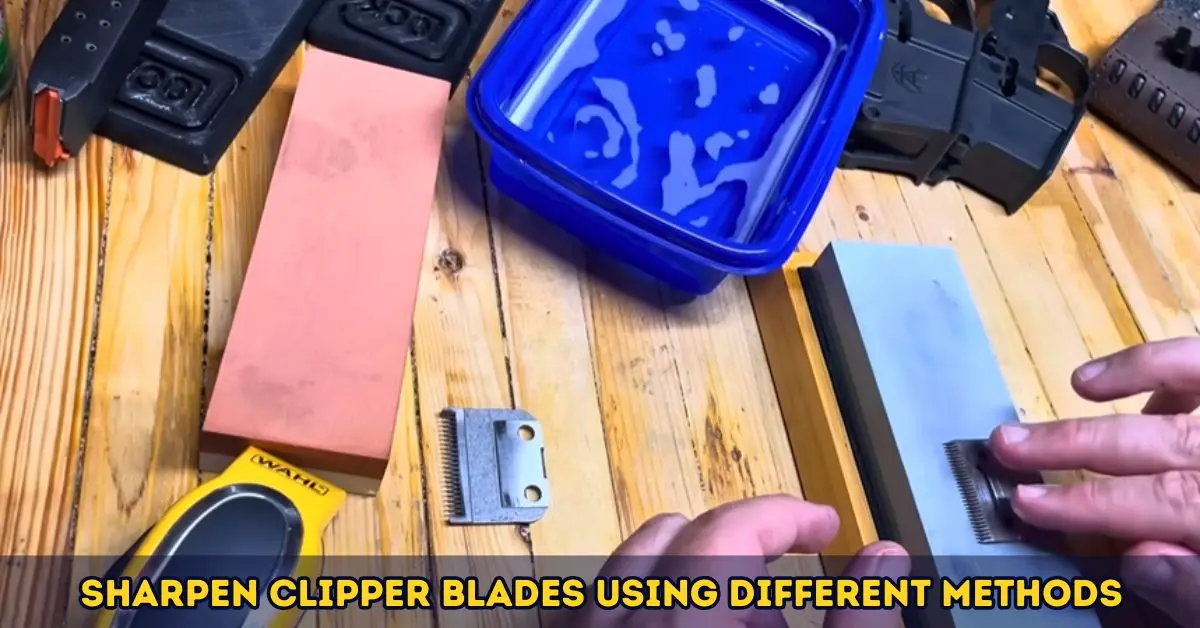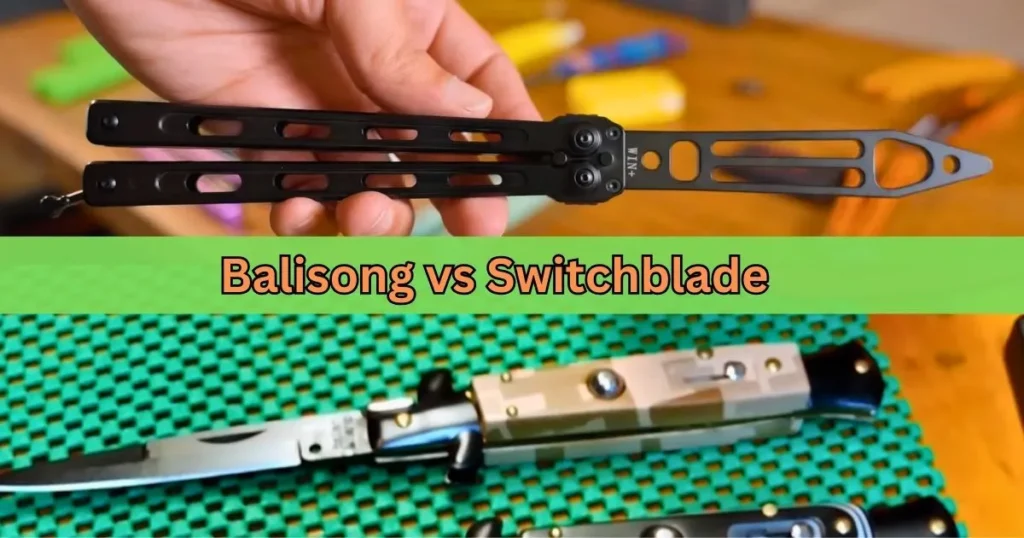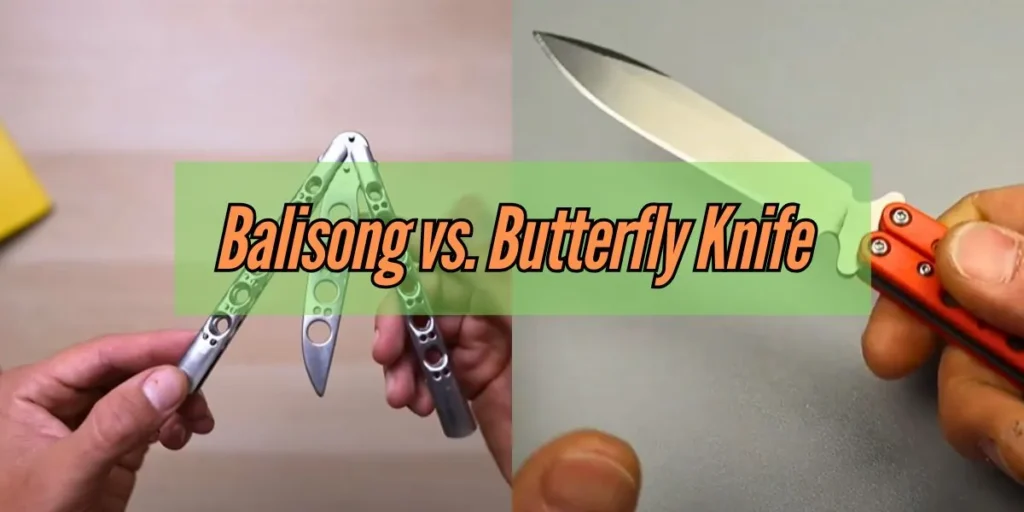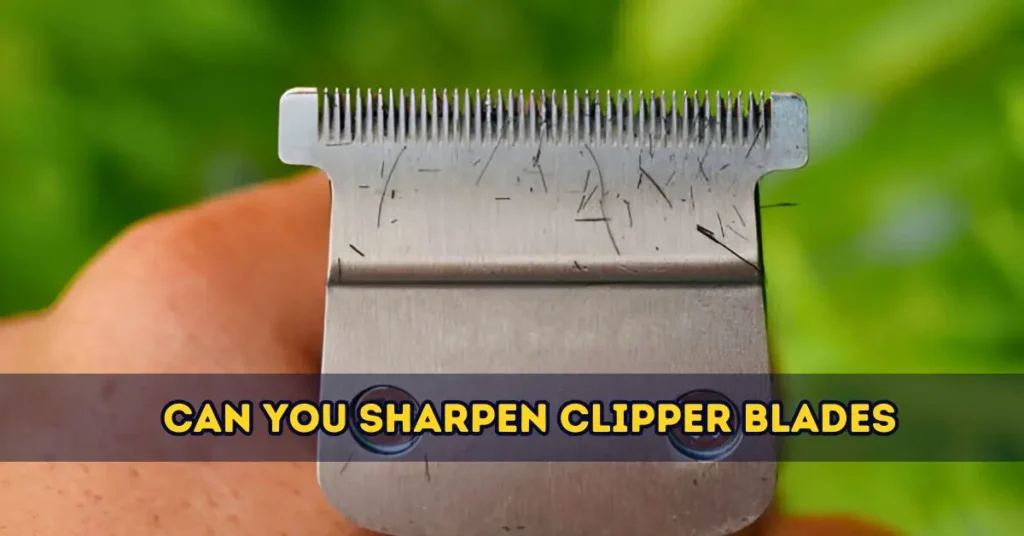Can You Sharpen Clipper Blades? A Complete Guide
Table of Contents
Toggle
If you’ve ever wondered, “Can you sharpen clipper blades?”—the answer is yes, and it’s easier than you might think! Sharpening your clipper blades at home can save you time and money. Dull blades can make cutting difficult, cause uneven results, or even pull hair.
But with the right tools, you can restore their sharpness. Whether you’re looking for how to sharpen clipper blades without a stone or want to try methods like sharpening with salt or sandpaper, the process is simple and rewarding.
For those with Wahl or horse clippers, there are specific techniques to keep them in top condition. A clipper blade sharpening kit can also be a helpful investment. By learning how to sharpen clipper blades at home, you’ll enjoy smoother, faster results. In this guide, we’ll walk you through everything you need to know to keep your clipper blades sharp and ready to perform their best. Let’s get started!
Why Do Clipper Blades Become Dull?
Keeping clipper blades sharp for longer can be challenging, especially if you’re unsure why they dull. Let’s examine the issue.

Common Causes of Blade Dulling
The most common reason is hair and dirt build-up. Over time, tiny hairs and debris can get stuck between the blades, creating friction and reducing sharpness. Another reason is improper use or storage. Dropping clippers or storing them in a damp environment can damage or rust them. Lastly, the lack of regular maintenance plays a big role. Skipping cleaning or oiling routines causes wear and tear to occur faster.
Signs Your Clipper Blades Need Sharpening
How do you tell when your blades are dull? Look for these signs:
- Uneven cuts or pulling: If the clippers tug at the hair instead of cutting smoothly, it’s time for maintenance.
- Increased noise or vibration: Dull blades make the motor work harder, causing unusual sounds.
- The dull appearance of the blades: A shiny, clean blade performs better than one with scratches or residue.
Understanding these causes and signs can help you use easy methods to sharpen clipper blades and keep them in great condition for longer.
Benefits of Regular Clipper Blade Sharpening
Sharpening your clipper blades regularly has many benefits. First, it extends the lifespan of your clippers. When blades are kept sharp, they experience less wear and tear, which means your clippers will last longer and perform better over time.
Another benefit is improved cutting efficiency. Dull blades tend to drag or tear, making the cutting process frustrating. Sharp blades glide smoothly, giving precise and fast results. Whether grooming pets or trimming hair, a sharp clipper makes the job easier.
Using a home sharpening kit for clippers is an easy way to keep blades sharp without spending extra money. Regular sharpening helps you avoid the cost of frequent replacements. Plus, sharpening clippers without professional tools saves time and effort. You don’t need to go to a professional every time your blades get dull.
Essential Tools for Sharpening Clipper Blades

When your clipper blades become dull, sharpening them at home is easy with the right tools. Let’s compare different methods and materials you can use.
- Using a Stone (Whetstone or Diamond Stone)
A sharpening stone is a classic and effective tool. It provides precision and is well-suited for deep sharpening. To use it, simply run the blade along the stone at the correct angle until it regains its edge. - Salt Sharpening Method for Clippers
Did you know salt can sharpen clipper blades? This budget-friendly technique involves creating a salt bed, placing the blade on it, and gently rubbing it until sharp. It’s simple, quick, and uses a common household item. - Honing Rods
Honing rods are another convenient option. They’re great for touch-ups and maintaining sharpness between uses. - Sandpaper Techniques
Sandpaper is a versatile, inexpensive choice. Use fine-grit sandpaper to restore the blade’s edge by lightly sanding both sides. - Electric Sharpeners
Electric sharpeners are ideal for a fast and effortless method. They’re also perfect for frequent users who want consistent results. - Clipper Blade Sharpening Kits
These kits include everything you need, including stones, oils, and guides. For the best results, look for kits made with high-quality materials. - Sharpening clippers with household items or common materials is a breeze with these tools and methods!
Preparing to Sharpen Clipper Blades at Home

Sharpening clipper blades at home is easy if you follow some simple steps. Let’s start by ensuring safety and preparing your clippers properly.
Safety Precautions
Always handle sharp tools with care. Wear gloves to protect your hands and use eye protection to prevent dust or small particles from getting into your eyes. Keep your workspace clean and well-lit for better control during sharpening.
Cleaning and Disassembling the Clippers
Begin by thoroughly cleaning your clippers. Use a small brush to remove hair, dirt, and oil buildup from the blades. You can also wipe down the body of the clippers with a damp cloth. Clean blades not only sharpen better but also stay sharper for longer.
Next, disassemble the clippers. Most clippers have screws holding the blades in place. Use a screwdriver to remove them carefully. Make sure you keep all screws and parts organized so you can reassemble the clippers later without any hassle.
Now, your clipper blades are ready for sharpening. A home sharpening kit is a great option, as it’s affordable and effective. These kits come with everything you need to sharpen clippers without professional tools. Follow these budget-friendly clipper sharpening tips to save time and money while keeping your clippers in excellent shape.
By preparing correctly, you’ll achieve sharp, efficient blades and enjoy better grooming results!
How to Sharpen Clipper Blades Using Different Methods

Clipper blades are essential for maintaining your clippers in top condition. Over time, they can become dull, affecting their performance. Fortunately, several methods exist to restore dull clipper blades and bring them back to life. Here, we’ll go over how to sharpen clipper blades using different techniques, including stones, salt, sandpaper, and more.
How to Sharpen Clipper Blades with a Stone
Sharpening your clipper blades with a stone is a reliable method. You will need a sharpening stone, typically a whetstone or diamond stone.
- Choose the Right Stone
Pick a fine-grit sharpening stone. A diamond stone is an excellent option as it’s durable and efficient for sharpening clippers. You can also use a medium-grit stone, especially if your blades are dull. - Wet the Stone
Wet the stone with water or oil to prevent it from becoming too abrasive. This helps to lubricate the surface and ensures a smooth sharpening process. - Sharpen the Blades
Hold the clipper blade at a 30-degree angle against the stone. Use a steady, even motion to move the blade back and forth over the stone. Sharpen each side of the blade evenly, ensuring both edges are treated. - Check the Sharpness
After sharpening, test the blade by gently running your finger along it (with care). If it feels sharp and smooth, it’s ready to be reassembled.
Sharpening grooming clipper blades with a stone requires patience and precision, but it’s one of the most effective DIY methods.
Sharpening Clipper Blades with Salt

Consider using salt if you’re looking for a quick and eco-friendly way to restore dull clipper blades. This method is quite simple and works well for lightly dull blades.
- Prepare the Salt Bed
Pour a generous amount of salt into a shallow container or tray. You can use regular table salt or sea salt for this method. - Position the Blades
Place the clipper blades in the salt bed. The salt will act as an abrasive, cleaning and sharpening the blades’ edges. - Sharpen the Blades
Press the blades down and gently rock them back and forth in the salt. The salt will gradually remove buildup and restore the blades’ sharpness. - Clean the Blades
Once you’ve finished sharpening, clean the blades thoroughly to remove any salt residue. Dry them well before oiling.
This eco-friendly clipper blade sharpening idea is quick and effective. It’s perfect for minor dullness and will save you time.
How to Sharpen Clipper Blades with Sandpaper

Another affordable and easy method for sharpening your clipper blades is by using sandpaper. Sandpaper is a versatile tool that can quickly improve the sharpness of the blades.
- Choose the Right Sandpaper
When sharpening clipper blades, use fine-grit sandpaper, typically between 600 and 1000 grit. This will ensure that the blades are not damaged. - Place the Sandpaper on a Flat Surface
Lay the sandpaper flat on a table or work surface. Make sure the surface is stable and won’t move during the process. - Sharpen the Blades
Hold the clipper blades at a slight angle to the sandpaper. Gently move the blades over the sandpaper in smooth, even strokes. Work your way from one end of the blade to the other, sharpening both edges. - Test and Clean the Blades
After sharpening, check the sharpness. Clean off any sandpaper residue and oil the blades for longevity.
This method is effective and quick, especially if you don’t have a sharpening stone handy.
How to Sharpen Wahl Clipper Blades at Home
Wahl clippers are a popular brand, and sharpening their blades slightly differs from sharpening other brands. Here’s how you can sharpen Wahl clipper blades at home.
- Remove the Blades
Carefully detach the blades from the clippers, ensuring they do not damage the mechanism. - Inspect the Blades
Look for signs of wear or rust. Wahl blades are typically made of high-quality steel, so they only need sharpening if dull or damaged. - Use the Stone or Sandpaper Method
To restore the blades’ edges, use restore the blades’ edges, use ar. Follow the steps mentioned earlier, paying special attention to the blade’s angle and sharpness. - Reassemble and Test
After sharpening, reassemble the blades and test them on hair. Make sure they cut smoothly without snagging.
How to Sharpen Horse Clipper Blades
Horse clipper blades are more prominent and heavier-duty than regular clippers, requiring some adjustments for effective sharpening.
- Use the Right Sharpening Tool. Using a sharpening stone or electric sharpener with coarse grit for horse clipper blasting is best. Larger blades require more attention than smaller clippers.
- Follow the Same Basic Steps
Sharpen the blades using a stone or sandpaper, ensuring you maintain the proper angle. Focus on sharpening both the cutting edge and the back edge of the blade. - Test the Blades
Once sharpened, test the blades on thick hair to ensure they’re cutting smoothly. If they still feel dull, repeat the sharpening process.
These tips for horse clipper blade sharpening will help you keep your equipment in top shape.
Alternative Techniques for Sharpening Clipper Blades

When it comes to sharpening clipper blades, there are several techniques you can try, each with its pros and cons.
Electric Sharpeners: Pros and Cons
Electric sharpeners are a quick and efficient way to restore dull clipper blades. They work by grinding the blade against a rotating surface. The main advantage is speed—electric sharpeners can finish the job in minutes. However, they can be expensive and require professional care to avoid damaging delicate blades. If you’re unsure, it’s best to go slow and follow the manufacturer’s guidelines.
Honing Rods: A Quick Solution
Honing rods are a simple, cost-effective option for maintaining clipper blades. Unlike sharpening, honing simply realigns the blade’s edge, which can help improve performance without removing too much metal. To use a honing rod, glide the blade across it a few times at a 20-degree angle. This method is ideal for light maintenance between sharpening sessions and a great way to keep grooming clipper blades sharp.
Professional Sharpening Services: When to Seek Expert Help
While DIY methods are great for regular maintenance, sometimes blades need professional attention. If you’re struggling with restoring dull clipper blades or notice excessive wear, it’s time to seek expert help. Professionals use advanced equipment to sharpen blades to their optimal condition. This is especially important for heavy-duty tools like horse clipper blades or blades for pet clippers, which require more precise sharpening.
Tips for Maintaining Clipper Blades to Avoid Frequent Sharpening
Maintaining your clipper blades properly can save you from frequent sharpening. First, always clean your clipper blades after each use. Hair and dirt can build up, making the blades dull faster. Use a brush or compressed air to remove debris. Next, proper storage is essential. Always store your clippers in a dry place to prevent rust or damage. Keeping them in a protective case or a safe area can extend their life.
Another key tip is using clipper oil. After every use, apply a few drops of oil to the blades. This helps minimize friction and keeps the blades running smoothly. It also helps prevent overheating, which can cause the blades to wear out quickly.
If you’re sharpening your blades at home, use the best sharpening kits for clippers. These kits often include portable clipper blade sharpening tools, which are great alternatives to sharpening stones for clippers. You can follow a step-by-step guide for sharpening knives, ensuring you do it correctly. After sharpening, remember to oil the blades again to maintain their sharpness.
Common Mistakes to Avoid When Sharpening Clipper Blades
Sharpening clipper blades can be tricky if you’re not careful. One common mistake is over sharpening, which can wear down the blade and make it less effective. Be sure to sharpen only as needed.
Another mistake is using the wrong tools or methods. Always use the correct sharpening tools for the job. While a portable clipper blade sharpening tool might be convenient, it may sometimes give a different result than using a stone or sandpaper. Choose wisely based on your clipper’s brand and type.
Proper cleaning before sharpening clipper blades is essential. Dirt and hair buildup can interfere with sharpening if the blades are cleaned. Before you begin, ensure the blades are free from debris and residue. This step helps prevent damage and allows you to sharpen them evenly.
Finally, don’t forget to oil the blades after sharpening. Neglecting this step can lead to rusting and premature dullness. A small amount of oil will keep the blades running smoothly for longer.
Avoid these mistakes; your clipper blades will stay sharp and perform at their best.
Conclusion
Sharp clipper blades are essential for smooth, precise cuts. When your knives are sharp, they work faster and prevent hair-pulling, making the job easier and more comfortable. It’s also more cost-effective to sharpen your blades at home rather than replacing them.
Plus, sharpening at home is easier than you think! You can keep your clipper blades in top shape with the right tools and a little practice. Don’t forget to clean and oil them regularly to maintain performance. Remember, sharpening clipper blades improves their efficiency and extends their lifespan.
So, give it a try—you’ll be glad you did!
Frequently Asked Questions (FAQs)
Using tools like stones, sandpaper, or sharpening kits, you can sharpen clipper blades at home.
Every 3 to 6 months, depending on usage. Sharpen sooner if blades pull hair or cut unevenly.
You can use salt, sandpaper, or honing rods as alternatives to a sharpening stone.
Yes, as long as you use the proper techniques and safety precautions.
Use a sharpening stone or clipper sharpening kit designed for Wahl blades.
Yes, horse clippers or a heavy-duty sharpening kit may need more effort.
A sharpening stone, sandpaper, honing rod, or sharpening kit are essential tools.
Yes, it ensures smoother cuts and prevents damage to the clippers.
It depends on the blades, but stone sharpening is precise, while salt and sandpaper are quick options.
Clean, oil, and store your clippers properly to maintain sharpness.
Related Posts
-
 17 Dec 2024 KnifeThe Ultimate Guide on How to Date Buck Knives
17 Dec 2024 KnifeThe Ultimate Guide on How to Date Buck Knives -
 17 Dec 2024 KnifeHow Old Is My Buck Knife? A Comprehensive Guide
17 Dec 2024 KnifeHow Old Is My Buck Knife? A Comprehensive Guide -
 16 Dec 2024 KnifeBalisong vs Switchblade: Which Knife Suits Your Needs Best?
16 Dec 2024 KnifeBalisong vs Switchblade: Which Knife Suits Your Needs Best? -
 16 Dec 2024 KnifeBalisong vs Butterfly Knife: What’s the Real Difference?
16 Dec 2024 KnifeBalisong vs Butterfly Knife: What’s the Real Difference? -
 13 Dec 2024 KnifeCan You Sharpen Clipper Blades? A Complete Guide
13 Dec 2024 KnifeCan You Sharpen Clipper Blades? A Complete Guide -
 12 Dec 2024 KnifeCan You Ship Knives Through USPS? A Comprehensive Guide
12 Dec 2024 KnifeCan You Ship Knives Through USPS? A Comprehensive Guide -
 10 Dec 2024 KnifeWhat Grit Whetstone for Kitchen Knives? Expert Tips Inside!
10 Dec 2024 KnifeWhat Grit Whetstone for Kitchen Knives? Expert Tips Inside! -
 07 Dec 2024 KnifeHow Long Can a Kitchen Knife Be Wet? A Practical Guide
07 Dec 2024 KnifeHow Long Can a Kitchen Knife Be Wet? A Practical Guide -
 05 Dec 2024 KnifeHow to Sharpen a Sickle Like a Pro: Expert Tips
05 Dec 2024 KnifeHow to Sharpen a Sickle Like a Pro: Expert Tips -
 05 Dec 2024 KnifeHow to Sharpen Titanium Coated Knife - Expert Tips
05 Dec 2024 KnifeHow to Sharpen Titanium Coated Knife - Expert Tips














